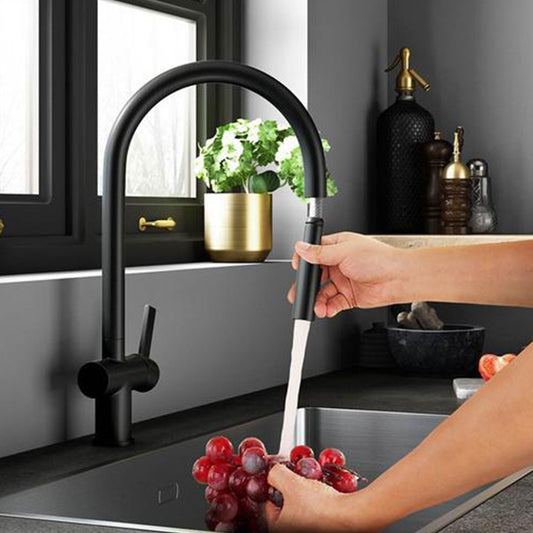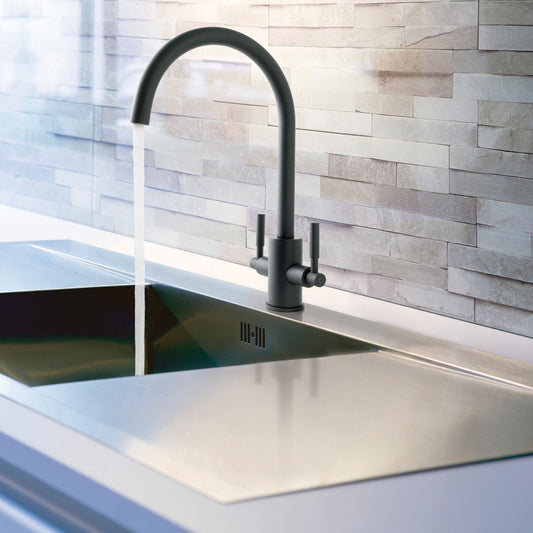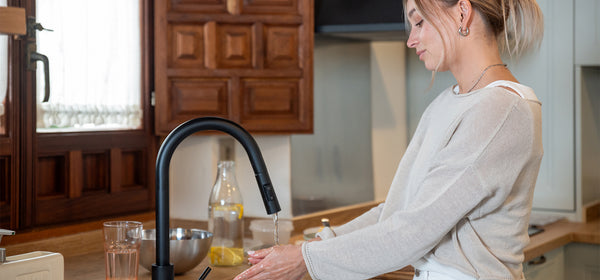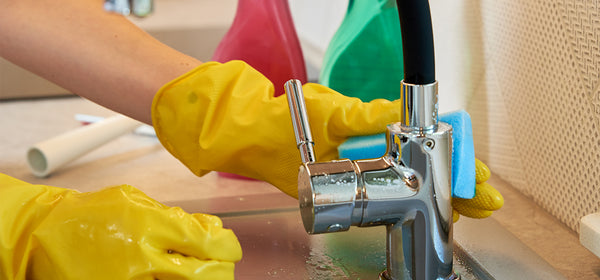How to select a Kitchen Tap(Kitchen Tap Buying Guide)
Table of Content:
-
The Ultimate Kitchen Tap Buying Guide: Make the Right Choice!
-
Introduction
-
How Does a Tap Work?
-
Types of Kitchen Taps
-
Types of Tap Fittings
-
Tap Design and Finishes
-
Installation and Maintenance
-
Water Pressure
-
Tap Function
-
Spout Shape and Hole Size
-
Water and Energy Saving Functions
-
Budget
-
New Trends
-
Conclusion
The Ultimate Kitchen Tap Buying Guide: Make the Right Choice!
Choosing the right kitchen tap is essential for both functionality and aesthetics. This comprehensive guide combines insights from various sources to help you make an informed decision.
Introduction
Kitchen taps are a critical component of any kitchen, providing both functional and aesthetic value. The right tap can enhance your kitchen's design and make everyday tasks more efficient. When selecting a kitchen tap, consider factors such as water pressure, tap type, design, finish, and additional features. A well-chosen tap not only complements your kitchen decor but also ensures ease of use and reliability. Modern kitchen taps come with a variety of features designed to improve functionality, such as pull-out hoses, swivel spouts, and advanced control systems.
How Does a Tap Work?
Kitchen taps control the flow and temperature of water through a combination of valves and handles. Inside the tap, valves regulate the mix of hot and cold water, which is then dispensed through the spout. Understanding how taps work helps in choosing one that suits your needs. Water pressure is crucial as it determines the flow rate and can affect the performance of certain tap types, especially those with additional features like pull-out sprays. High-pressure systems can support more advanced features, while low-pressure systems may require specific tap designs to function efficiently.
Types of Kitchen Taps
Single Lever Taps
Single lever taps are mixer taps that use one lever to control both water flow and temperature. This design is popular for its sleek, minimalist look and ease of use. By moving the lever side to side, you can adjust the water temperature, and by moving it up or down, you can control the water flow. This simple mechanism makes single lever taps a convenient choice for busy kitchens. They are particularly suitable for modern, contemporary kitchens where clean lines and efficiency are important.
Twin Lever Taps
Twin lever taps feature separate controls for hot and cold water, providing precise temperature adjustments. Each lever operates independently, allowing you to mix the desired amount of hot and cold water. This type of tap is often found in traditional kitchen designs and offers a classic aesthetic. Twin lever taps are ideal for those who prefer manual control over water temperature. They add a vintage charm to the kitchen while offering functionality and ease of use.
Monobloc Mixer Taps
Monobloc mixer taps combine hot and cold water through a single spout, operated by a single lever or two handles. These taps are versatile and can fit into various kitchen styles, providing a balance of functionality and aesthetics. Monobloc taps allow for precise temperature control, making them a practical choice for many households. Their compact design saves space around the sink area, making them ideal for smaller kitchens or minimalist designs.
Pull-Out Taps
Pull-out taps feature a retractable hose that allows for flexible use, making them ideal for rinsing dishes and cleaning the sink. The extendable hose provides a direct water jet, which is useful for reaching all corners of the sink or filling large pots. Pull-out taps are especially beneficial in large or double sinks where more reach and flexibility are needed. This type of tap enhances the functionality of the kitchen, making everyday tasks easier and more efficient.
Pillar Taps
Pillar taps consist of separate taps for hot and cold water and are commonly used in traditional kitchens. Each tap controls its own water flow, allowing for straightforward operation. While they are less versatile than mixer taps, pillar taps are chosen for their classic look and simplicity. They are often used in utility areas or secondary sinks where the need for precise temperature control is less critical. Pillar taps bring a timeless appeal to the kitchen, complementing traditional or vintage decor.
Filter Tap
Filter taps are designed to provide filtered water directly from the tap, removing impurities and ensuring clean drinking water. They combine standard tap functions with built-in filtration systems, making them an excellent choice for health-conscious households. Filter taps eliminate the need for separate water filters or bottled water, offering convenience and environmental benefits. They come in various designs to match different kitchen styles while providing the added benefit of clean, filtered water at your fingertips.
Boiling Water Taps
Boiling water taps provide instant boiling water, eliminating the need for a kettle and saving time and energy. These taps are perfect for busy kitchens, allowing you to make tea, coffee, or prepare food quickly. Boiling water taps are energy-efficient and convenient, offering both hot and boiling water from a single tap. They are ideal for households that frequently use boiling water, providing a seamless and efficient solution for daily tasks. This type of tap adds a modern and practical feature to the kitchen, enhancing its functionality.
Spring Taps
Spring taps feature a professional-style spring arm that allows for 360° movement, providing high flexibility and ease of use. These taps are designed for large sinks or frequent use, offering robust performance and a modern, industrial look. The flexible hose and high arc make it easy to wash large items or clean the sink. Spring taps are often found in restaurant kitchens but are becoming popular in residential kitchens for their durability and contemporary style.
Sensor Taps
Sensor taps represent a significant leap in modern bathroom and kitchen design, combining convenience, hygiene, and efficiency in one innovative feature. These taps are equipped with motion sensors that detect hand movements, allowing users to activate the flow of water without physical contact. This touchless operation minimizes the spread of germs and reduces water waste by ensuring that water is only used when needed. Sensor smart taps often come with customizable settings for temperature control and water flow, enhancing user comfort and efficiency. They are ideal for both residential and commercial environments, offering a sleek, contemporary look while promoting energy conservation and improving overall hygiene. By incorporating sensor technology, these taps streamline everyday tasks and contribute to a more eco-friendly and sanitary environment.
Foot Control Taps
Foot control taps are operated by foot, providing a hands-free functionality that is ideal for busy or messy cooking environments. This type of tap allows you to control the water flow without using your hands, which is especially useful when your hands are full or dirty. Foot control taps offer a hygienic solution for multitasking in the kitchen, reducing the need to touch the tap with soiled hands. They are a practical and innovative addition to any kitchen, enhancing both convenience and cleanliness.
Types of Tap Fittings
Straight Fittings: Straight fittings are designed for situations where the water pipes come up from the floor directly into the tap. They are straightforward to install and connect the pipework in a straight line to the tap. This type of fitting is ideal for traditional setups where the pipework is exposed and runs vertically.
Angled Fittings: Angled fittings are used when the water pipes come out of the wall and need to turn 90 degrees to connect to the tap. These fittings are versatile and commonly used in modern kitchens where the pipework is hidden within the walls. They provide a neat and clean look by aligning the pipes with the tap inlet without visible bends or loops.
Corner Fittings: Corner fittings are used in installations where the pipework needs to make a horizontal turn to connect to the tap. They are perfect for compact spaces where a straight or angled fitting might not fit due to space constraints. These fittings ensure that the connection is secure and concealed, enhancing the overall aesthetic of the kitchen.
Compression Fittings: Compression fittings create a watertight seal using a compression nut and ring. They are commonly used for connecting pipes of different sizes or materials. These fittings are reliable and provide a secure connection, but they require precise installation to avoid leaks. They are suitable for both DIY projects and professional installations.
Push-Fit Fittings: Push-fit fittings are easy to install as they do not require any special tools or soldering. The pipe simply pushes into the fitting, creating a secure seal. These fittings are ideal for quick repairs or installations where ease of use is a priority. They are particularly popular in DIY projects due to their simplicity and reliability.
Flexible Hose Fittings: Flexible hose fittings connect the tap to the water supply using flexible hoses. These hoses can bend and flex, making them ideal for installations where rigid pipes cannot be used. Flexible hose fittings provide versatility and ease of installation, allowing the tap to be connected even in tight or awkward spaces. They are also useful in reducing vibration and movement, ensuring a longer lifespan for the tap and pipework.
Tap Design and Finishes
Chrome Finishes: Chrome is one of the most popular finishes for kitchen taps due to its sleek, modern appearance and ease of cleaning. Chrome taps are highly reflective, adding a touch of elegance and sophistication to any kitchen. They are durable and resistant to corrosion, making them a practical choice for busy kitchens. The smooth surface of chrome taps makes them easy to wipe down and keep spotless, maintaining their shine and enhancing the overall look of your kitchen.
Stainless Steel Finishes: Stainless steel taps are known for their durability and resistance to rust and stains. They offer a contemporary look that complements modern kitchen appliances and fixtures. Stainless steel finishes are also highly hygienic, as they are less likely to harbor bacteria and are easy to clean. These taps blend well with other stainless steel appliances, providing a cohesive look in the kitchen. Their robust nature ensures they can withstand frequent use without showing signs of wear and tear.
Brushed Nickel Finishes: Brushed nickel finishes provide a warm, subtle sheen that is less reflective than chrome. This finish is excellent for hiding fingerprints and water spots, making it a low-maintenance option. Brushed nickel taps offer a sophisticated, slightly matte look that works well in both traditional and contemporary kitchens. The finish’s durability ensures it retains its appearance over time, even with heavy use. Its muted elegance makes it a versatile choice for various kitchen styles.
Black Finishes: Matte black taps are trendy and offer a bold, striking look. They add a modern, edgy touch to the kitchen and contrast beautifully with lighter countertops and sinks. Black finishes are not only aesthetically pleasing but also practical, as they hide water spots and fingerprints well. This finish is ideal for those looking to make a design statement in their kitchen. The matt surface is easy to maintain and clean, ensuring the tap remains a focal point without requiring constant upkeep.
Gold and Brushed Brass Finishes: Gold and brass finishes bring a touch of luxury and vintage charm to the kitchen. These finishes are perfect for adding warmth and an opulent feel to traditional or transitional kitchen designs. While they require a bit more maintenance to keep their shine, the unique, rich appearance they provide can make them worth the effort. Gold and brass finishes can also be treated to be more resistant to tarnish, ensuring they maintain their stunning look over time. These taps add a distinctive, elegant flair to any kitchen, making them a focal point of the design.
Installation and Maintenance
Installation: Proper installation of a kitchen tap is crucial for its optimal performance and longevity. While DIY installation is possible, hiring a professional is recommended to ensure a secure fit and prevent potential leaks. Professional installers have the expertise to handle complex installations, such as those involving multiple fittings or advanced features like pull-out sprays and boiling water taps. They can also ensure that the tap is correctly connected to the water supply and that all seals are tight, preventing future issues.
Maintenance: Regular maintenance is essential to keep your kitchen tap functioning smoothly. This includes routine cleaning to prevent the buildup of limescale and grime, which can affect water flow and tap operation. Use mild cleaning agents and a soft cloth to clean the tap surfaces, avoiding abrasive materials that can scratch the finish. Check for leaks periodically and address any issues promptly to prevent water damage and wastage. Additionally, replacing worn-out washers and O-rings can help maintain a watertight seal and ensure the tap's longevity. Regular descaling is also important, especially in areas with hard water, to prevent blockages and maintain optimal water flow.
Water Pressure
Water pressure is a critical factor when selecting a kitchen tap. It determines the flow rate and overall performance of the tap. High water pressure is required for certain taps, such as those with pull-out sprays or additional features like boiling water functions. If your home has low water pressure, you may need to choose taps designed specifically for such conditions or consider installing a pump to boost the pressure. Understanding your home's water pressure ensures that you select a tap that performs efficiently and meets your daily needs, avoiding issues like weak water flow or inadequate performance.
Tap Function
The function of a kitchen tap extends beyond simply filling kettles. Modern kitchen taps are designed to facilitate various tasks such as washing dishes, rinsing food, and general cleaning. Features like pull-out sprays offer flexibility and make rinsing dishes or cleaning the sink easier. Lever handles provide precise control over water flow and temperature, enhancing usability. Swivel spouts are beneficial for large or double sinks, allowing easy access to all areas. When choosing a tap, consider your daily kitchen activities and select features that improve efficiency and convenience, ensuring the tap supports your routine and enhances kitchen functionality.
Spout Shape and Hole Size
Spout Shape: The shape of the spout significantly affects the functionality and aesthetics of the kitchen tap. High-arc or gooseneck spouts offer ample space underneath, making it easier to fill large pots and clean oversized items. They add an elegant, modern touch to the kitchen. In contrast, low-arc spouts provide a more compact design, suitable for smaller sinks and kitchens with limited space. The angle and reach of the spout also determine how water is directed into the sink, impacting ease of use and splash control.
Hole Size and Configuration: The number and size of holes in your sink or countertop influence the type of tap you can install. Standard configurations include single-hole, double-hole, and triple-hole setups. Single-hole installations are common for modern, minimalist designs and often accommodate single lever or monobloc taps. Double-hole and triple-hole configurations are typically used for traditional setups, supporting separate hot and cold handles or additional features like a soap dispenser. Understanding your sink’s hole configuration ensures you choose a compatible tap, facilitating a smoother installation process.
Water and Energy Saving Functions
Modern kitchen taps often incorporate water and energy-saving technologies to enhance efficiency and sustainability. Thermostatic mixing valves ensure water is delivered at a consistent temperature, reducing the need for constant adjustments and minimizing water wastage. Sensor-based controls or touchless taps activate water flow only when needed, significantly reducing unnecessary usage and promoting hygiene by limiting contact with the tap handles. Water-saving nozzles or aerators mix air with water, maintaining a strong flow while using less water, effectively lowering water consumption without compromising performance. These features not only conserve resources but also contribute to lower utility bills, making them an environmentally friendly and cost-effective choice for modern kitchens.
Budget
Considering your budget is essential when choosing a kitchen tap. High-end taps often come with advanced features, stylish designs, and durable materials, making them a long-term investment for your kitchen. However, mid-range products can provide excellent value for money, offering a balance between cost and functionality. It’s important to evaluate the features, materials, and brand reputation when selecting a tap within your budget. By carefully balancing cost with long-term benefits, you can find a tap that meets your needs without overspending, ensuring both quality and affordability.
New Trends
Innovations in kitchen tap design are constantly evolving, bringing new functionality and style to the forefront. Touch and sensor-based controls are becoming increasingly popular, offering hands-free operation for enhanced hygiene and convenience. Advanced finishes, such as matte black or brushed gold, are trending, adding a modern and sophisticated touch to kitchen decor. Multi-functional taps that combine features like pull-out sprays, filtration systems, and boiling water dispensers are also gaining traction. Staying updated with these trends can help you choose a tap that not only meets your practical needs but also enhances the aesthetic and functionality of your kitchen.
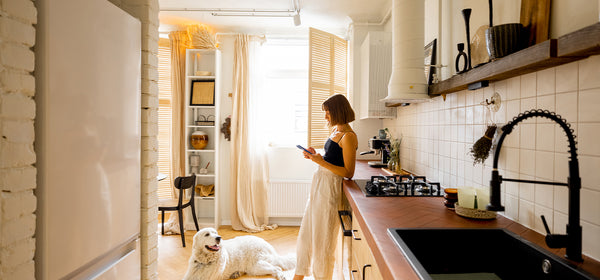
Conclusion
Choosing the right kitchen tap involves understanding the different types, their features, and how they fit into your kitchen's design and functionality. By considering factors like water pressure, tap design, finish, and additional features, you can select a tap that enhances your kitchen's efficiency and aesthetics. Proper installation and maintenance ensure long-term performance and satisfaction with your choice.
Explore our other related blog posts :
Discover the Benefits of a Pullout Kitchen Tap




